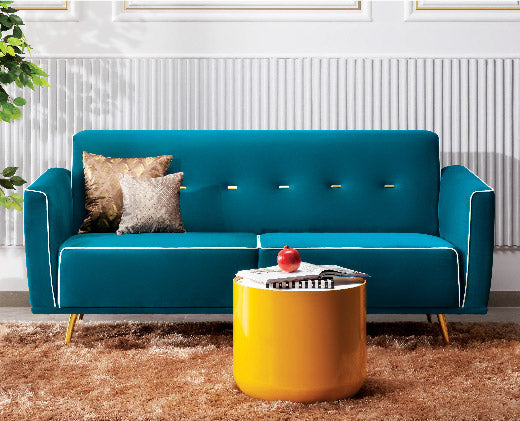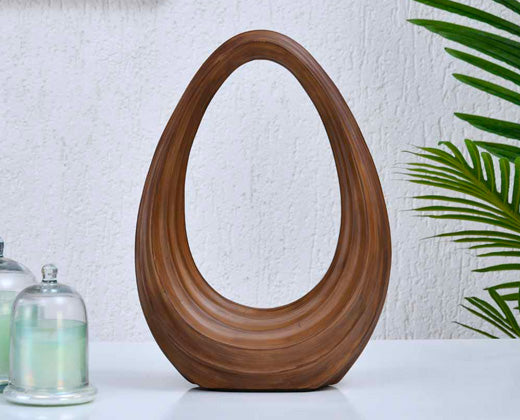- Furniture
- Sofas & Recliners
- Dining & Kitchen
- Beds & Wardrobes
- Bath & Laundry
- Furnishing
- Decor & Lighting
- Gifting Ideas
- Arias by Lara Dutta
Trending Products
Trending Products
A Guide to Plating Food Like a Professional

"You consume with your sight first," as the proverb goes, could not be more accurate. This is why famous chefs try to produce dishes that are not just delicious but also artistically constructed and aesthetically beautiful. Chefs use sights, textures, colours, scents, and balance to create a distinctive presentation to amaze their guests while plating food. You, too, can wow your visitors with elegantly presented meals, spectacular table arrangements, and delectable tastes. Make use of exquisite plating to display antique porcelain or dinnerware that you've been saving for special occasions. If you don’t have luxurious crockery, you can check out the @home website to purchase a set. Continue reading to learn about strategies for developing your own distinctive food presentation style.
Expert Food Plating Advice
A meal's presentation should have one purpose: to increase hunger and generate anticipation. Plating is an artistic, deliberate procedure that is intended to improve both the appearance and flavour of your cuisine. There aren't any strict guidelines to follow because it's a creative kind of art, but appearance should never be compromised for taste. Here are some suggestions to help you create the right balance between flavour and appearance.
Techniques For Presentation
The procedure of presenting food begins with choosing the appropriate dish for your meal. Consider the following while selecting the best plate for your meal presentation.
- Dish size -The size of your plate should be just right so that your food stands out while still appearing to be of reasonable size.
- Dish colour - A dish's colour may either excite or decrease appetite. Offering starters on red colour dishes encourages customers to purchase bigger meals and desserts since red stimulates the appetite. Because there aren't many meals that naturally exist in blue, professionals find blue tableware to be unappetising. You can also use contrasting dinner dishes to make your meal stand out. White dishes are appealing because they provide a neutral backdrop for colourful cuisine.
- Restaurant-style - If you run a fine-dining restaurant, vintage China tableware goes nicely with conventional dish designs. A smart gastropub should invest in distinctive dishes with unusual forms that allow for the most plating inventiveness.
Techniques For Arranging Food
The aesthetic tone, structural soundness, and taste distribution of your meal are all influenced by how your food is arranged. Some of the most effective methods for food presentation are listed below.
- Think of your dish like a clock - Consider your dinner plate to be a clock face as you arrange your items. Your protein should fall between three and nine, your starch or carbohydrate between nine and twelve, and your vegetable between twelve and three, according to the diner's perspective.
- Don't overcrowd your dish - Keep your design straightforward by concentrating on only one item (usually the protein). You can organise your supporting components to enhance your outstanding item more effectively if you have a focal point.
- Moist ingredients first - Plate damp components first and cover them with other meals to keep them from running. You can, for example, keep slant sliced meat over mashed veggies.
- Mix textures - Combining different textures, such as a velvety vegetable puree with crisp onion straws or crumbled blue cheese on top of a steak, results in mouthwatering mixes of textures that are traditional in fine dining.
Techniques For Visual Plating
Maximising the visual characteristics of your meal is a key plating approach. While your arrangement revolves around your protein, experimenting with the styles and patterns of the other pieces on your dish complements your main point and makes a gourmet display.
- Serve tiny dishes in odd quantities - Always serve visitors odd numbers of small foods, such as shrimp and scallops, as appetizer-sized entrees.
- Colour variety - Colorful dishes set the stage for a feast with a variety of flavours before your visitors even take their first bite. Contrasting with your focal element, including green veggies or fruit with vibrant colours, can do the trick. You can buy various types of dishes from the @home website.
- Monochromatic meals - Colour-coded components plated together visually create the idea that the meal only gives one flavour. Multiple textures and flavours startle the tastebuds and cause them to engage with the meal when presented to the palette.
- Increase the height of your dish - Building height will stimulate your guests' eyes. While compactly stacking items isn't as popular as it used to be, creating layers of food for diners to explore provides a fascinating experience.
- Create visual balance - Balance the topography of your dish by leaning long, flat items against higher pieces.
Techniques For Garnishing
A slice of orange and a bit of kale was once casually placed on each dish by the cooks. But few diners consumed these decorations since they didn't provide anything interesting to the dish. Modern garnishes combine wisely with the dish to generate taste bites. To perfect the last phase of food presentation, use these garnishing methods and recommendations.
- Edible garnishes - As you're finishing up your plating, keep in mind that you should always improve the meal with edible garnishes. If you're unsure whether a garnish is appropriate, consider whether you prefer to eat it with the dish.
- Placement - Always distribute garnishes evenly throughout the dish and never pile them up in one corner. To add colour or texture to the plate, scatter them judiciously.
- Less is more - Never overcrowd your dish with garnishes. If your dish is already full, choose a drizzle of flavour-infused vinegar or oil to improve the flavour and presentation of your food without filling it up.
Conclusion
The uniqueness of your food plating reflects your efforts to create the right tablescape and environment for your party. A blank dish is a great place to start when creating your presentation, just like a blank canvas is for an artist. Incorporate these strategies into your culinary masterpieces to create a great dish of food that will both aesthetically and flavorfully impress your visitors.
So, get started before the visitor arrives at your door! Check out the @Home website to have instant access to a comprehensive range of all sorts of dinner plates.















 Binary Ecommerce Experts
Binary Ecommerce Experts







Leave a Comment